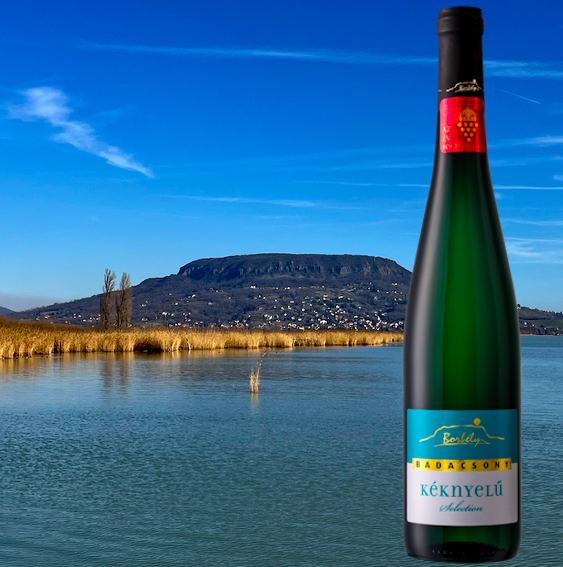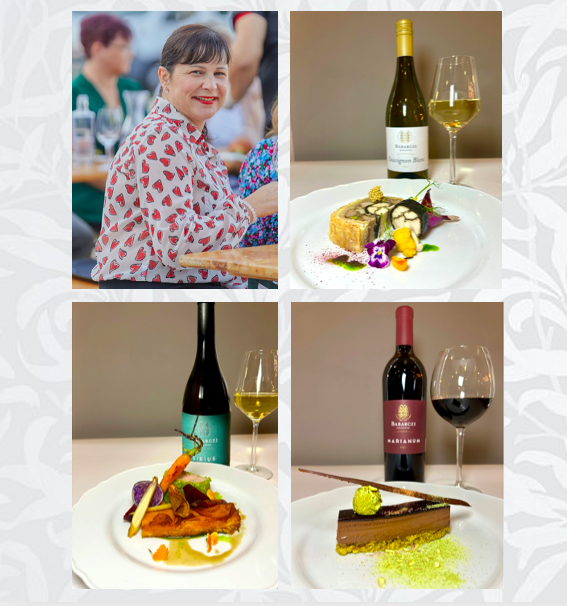
A gold mine of Balaton wine reviews
Thanks, Ollie!
Oliver Coleman, wine writer of JancisRobinson.com has recently visited Hungary, and he did his lesson, there is no doubt about it. His comprehensive article includes a detailed, easy-to-read historical background of Balaton wine region, and he really immersed in the stories of local winemakers to give an insider, detailed snapshot of the 6 subregions of Lake Balaton. Oliver also entered his article in the 7th Hungarian WebWineWriting contest, clearly not to gain votes, but to make the article published in one more place. His 102 wine reviews are 102 gems, useful material for all the winemakers.
(The cover photo features Oliver Coleman in Kistücsök restaurant, taking notes during the 2nd Hungarian Wine Summit.)
Read the whole article here (with subscription)
Kéknyelű, the “fickle grape”
The comprehensive Balaton article is available only for subscribers – well worth. Here we quote a few sentences from Oliver about Kéknyelű, one of the most peculiar grapes of the Lake, and we also quote three of the many Kéknyelű reviews by Ollie.
“…Kéknyelű is perhaps the most compelling, not least as an apposite analogy for the whole region’s revival. A female variety that needs a co-planted variety to pollinate, it’s a fickle grape that requires careful work in the vineyard and produces low yields (around 1 kg per vine). In the 18th century it was renowned but, by the late 1980s, only around one hectare remained in two micro-plots. The local viticultural research institute in Badacsony and a few tenacious producers saved it. Now there are 46 ha (114 acres) and interest is growing. Often quite subtle in youth with a stony, floral, herby character, it seems to really come into its own with age, opening into a toasty, burnt-orange and hay character after five years or more. An example from 2006 by Szeremley is still extraordinarily alive.”
Borbély Kéknyelű 2022, 16 points
From a plot on the Gulács Hill, where there is a little loam mixed with the basalt tuff. Fermented and aged for six months on the fine lees in eight-year-old Hungarian oak barrels (1,500 and 2,000 litres).
Quite expressive for the variety – fleshy, ripe nashi pears, red apples and lemon curd. Perhaps a hint of green pineapple, even. Similarly juicy on the palate with some broadness from the oak/lees. There’s a spiced edge – caraway and fennel seeds – and lively acidity to lighten the texture. Distinctive style of Kéknyelű and quite delicious.
More about Borbély Family Winery
Földi Bálint, Szent-György-hegyi Kéknyelű 2020, 16.50 points
Bálint Földi is a great believer in Kéknyelű – he even wrote his thesis on the variety. He is also the winemaker at Sabar but has small plots of his own vines. This one is from Szent György Hill, from a south-east-facing vineyard just below the tree line at the top. Whole-bunch-pressed – the juice gets a touch of oxidation in the press. Spontaneous fermentation in oak. Aged in Hungarian oak barrels for seven months. TA 6 g/l, RS 4 g/l.
An inviting nose of linden leaf, apple and apple blossom. A touch of toasty honeycomb, which melds beautifully with the appley fruit. Silky, oily texture. Lovely vein of vibrant acidity running through the palate. Ends with a hint of toffee apple and roasted fennel. Mouth-watering length. Great advert for the variety.
Szeremley Kéknyelű 2006, 17 points
A great vintage, according to winemaker László Szeremley. Whole-bunch-pressed. Stainless-steel fermentation with selected yeasts. Aged in large old vats (3,000– 6,000 litres).
Gorgeous aromas – quite a heady experience. Toast, lime cordial, honey, dried meadow flowers, linden leaf and a touch of petrol. Dried orange peel and almonds. Concentrated palate. This is still very much alive. The acidity is still so vibrant. Electrifying mineral spice on the finish. A tingling saline character remains on the lips. This wine may be something of a one-off, but it is a marvellous example of Kéknyelű’s ability to age under the right conditions.
Read the whole article here (with subscription)







